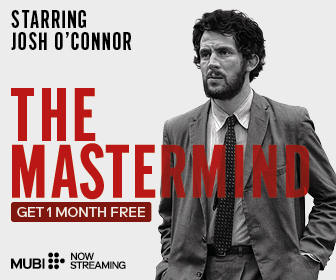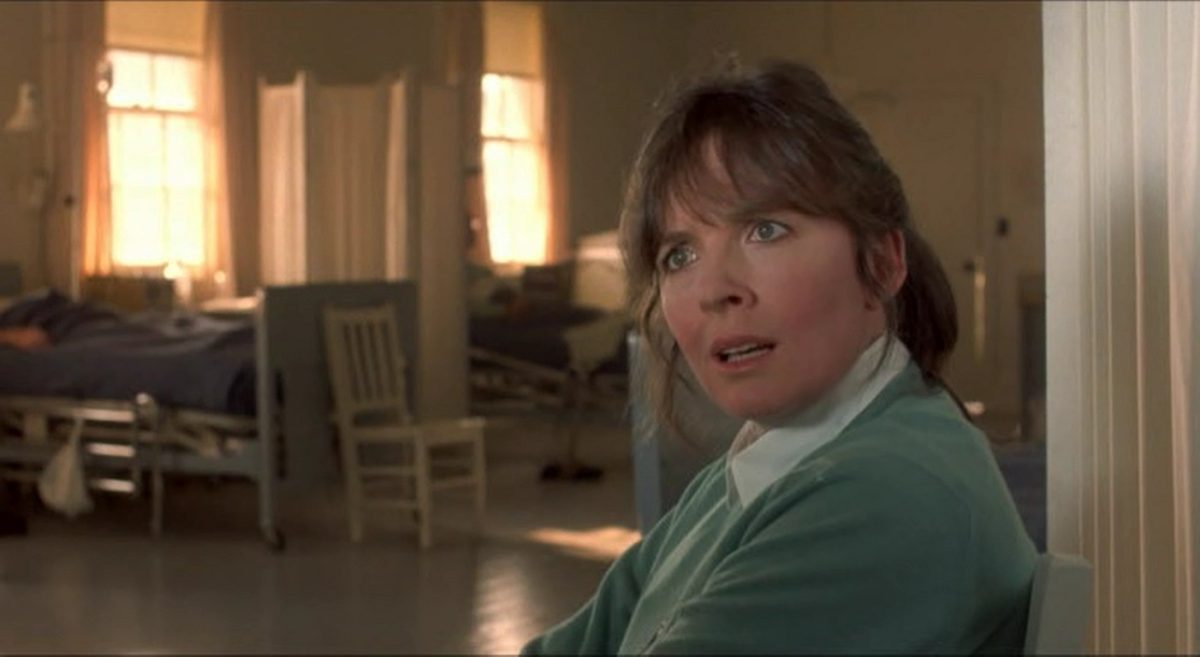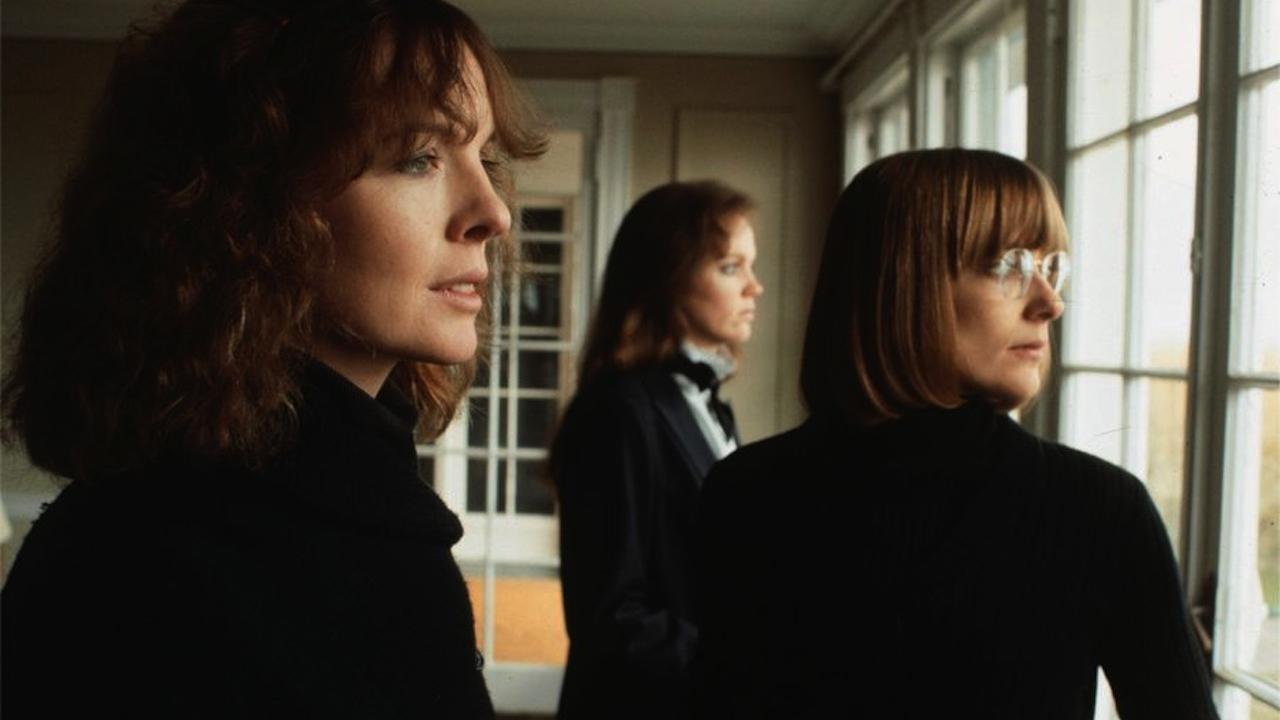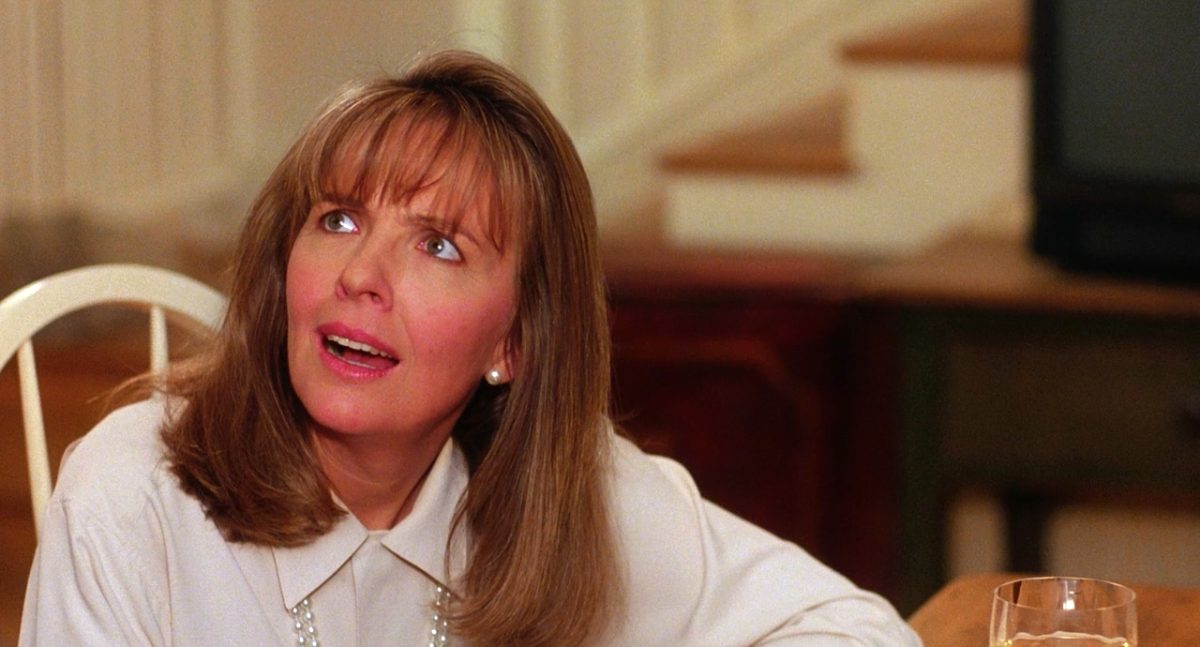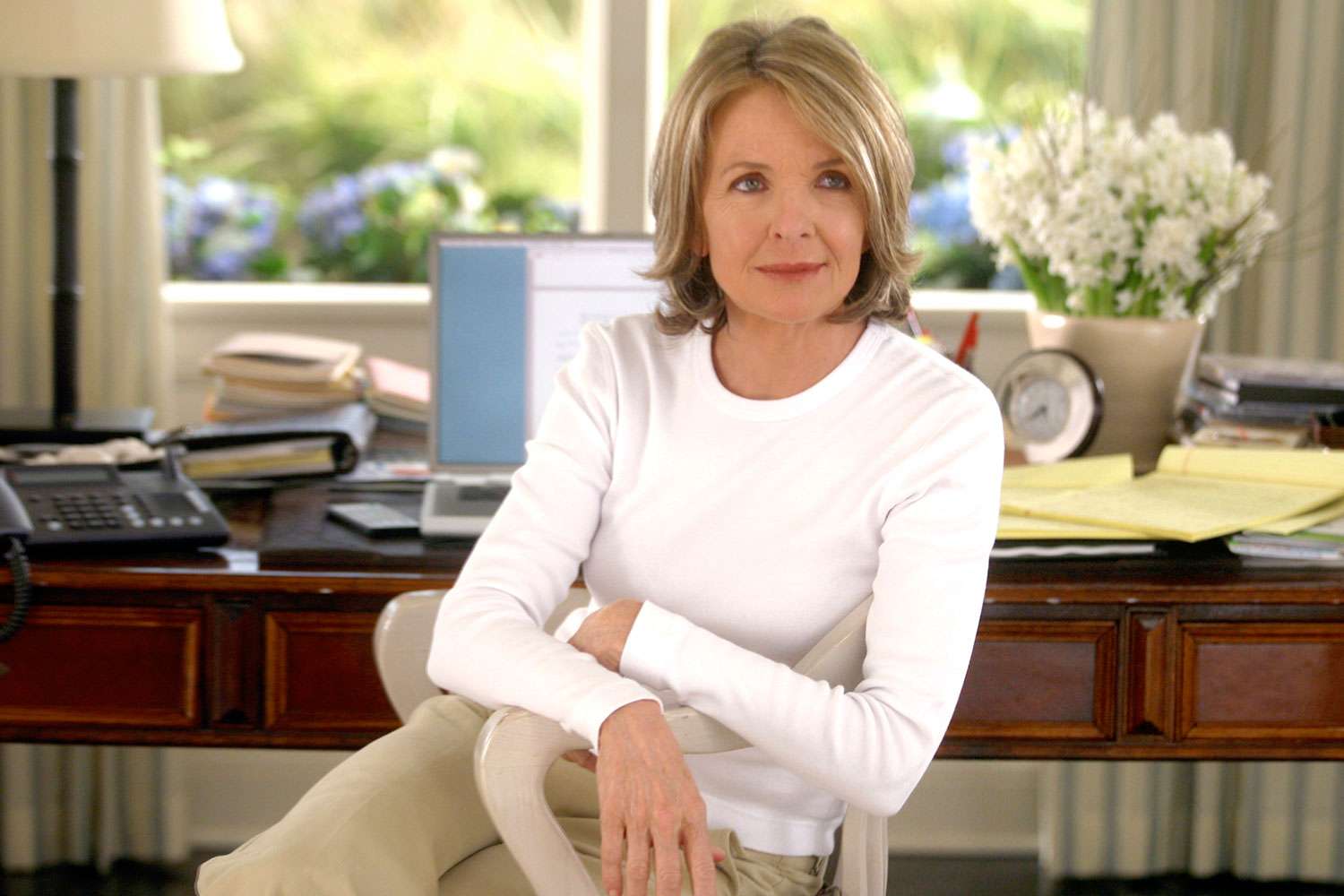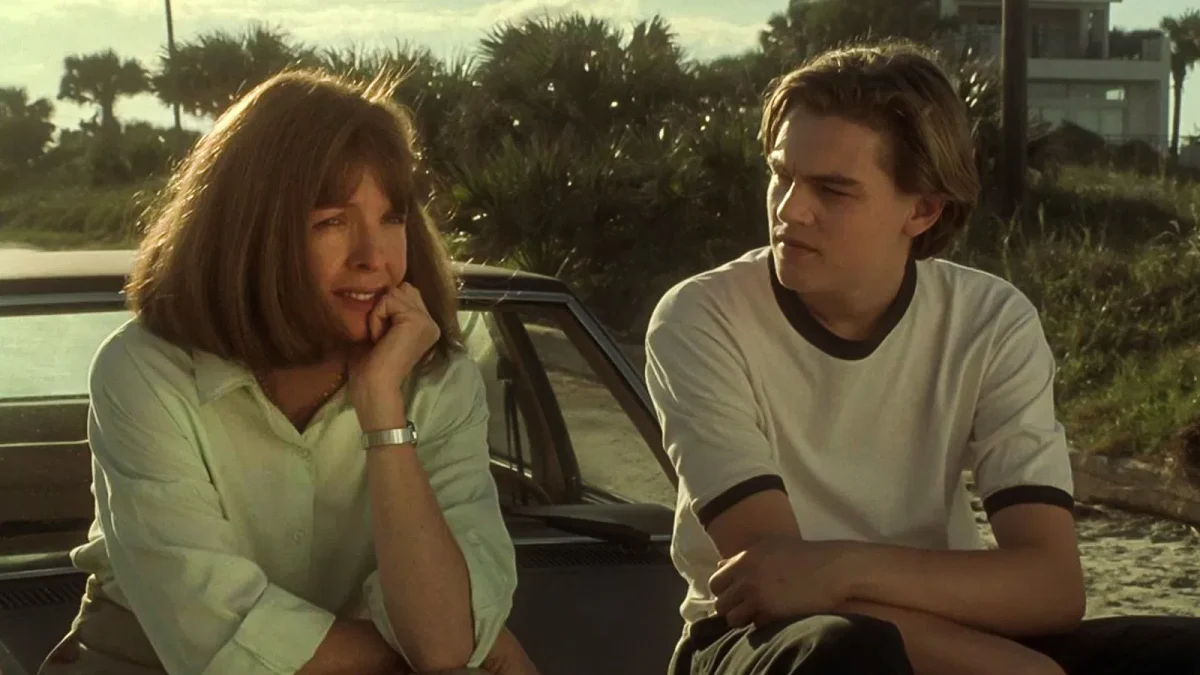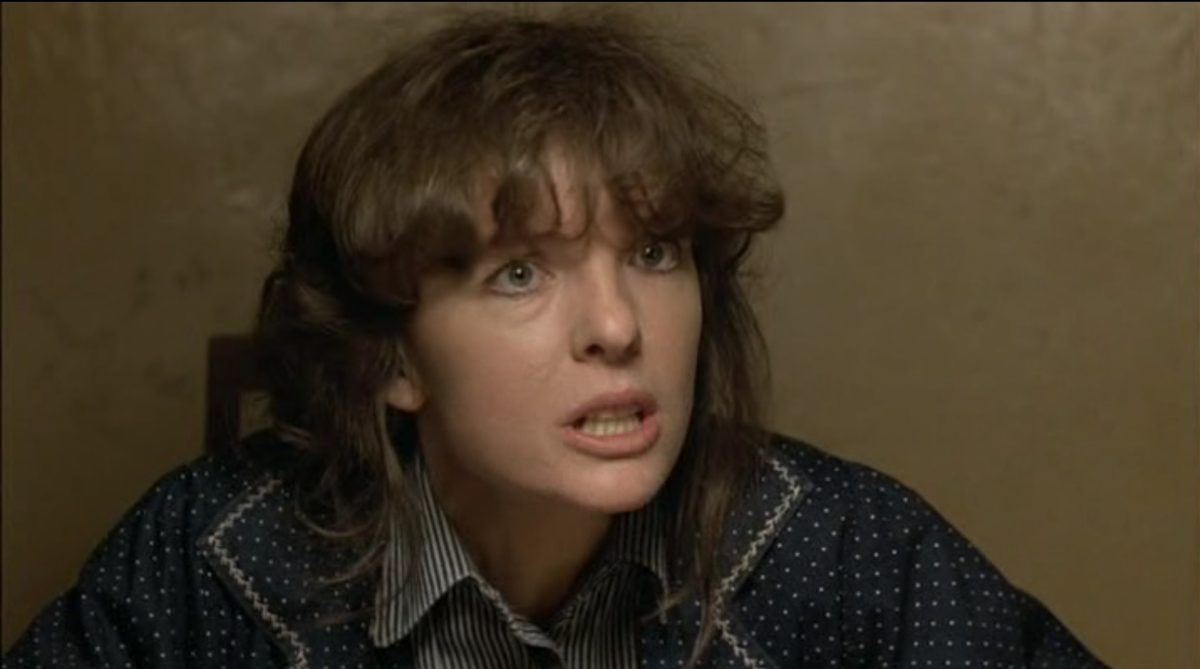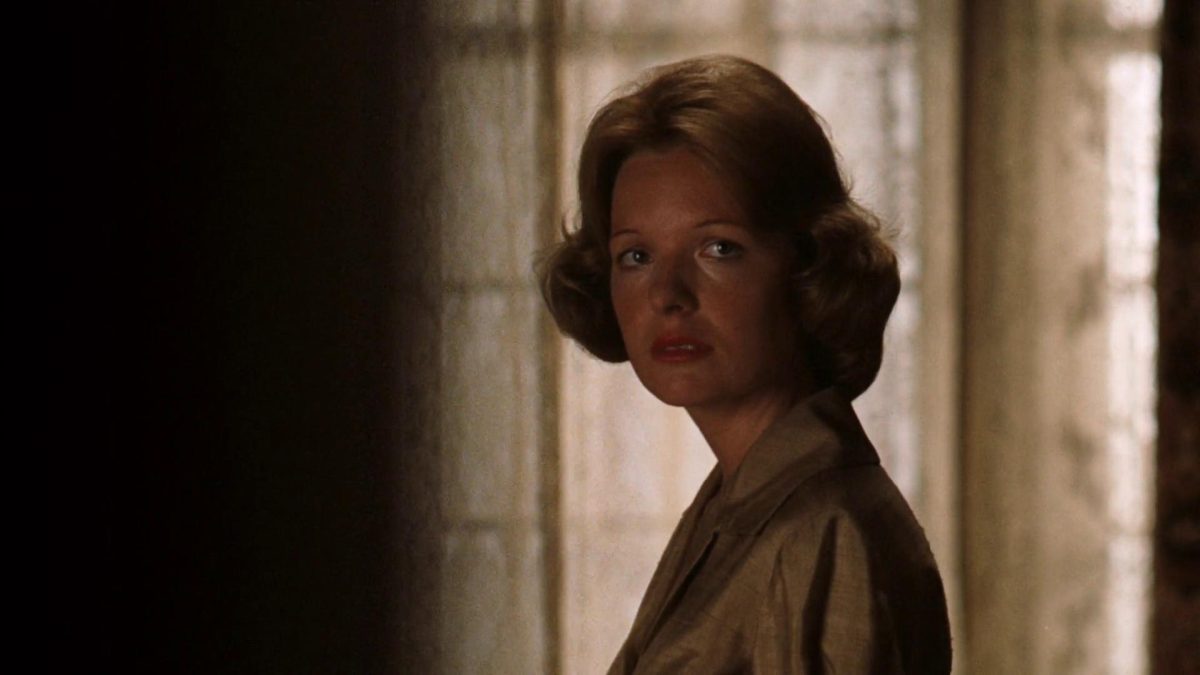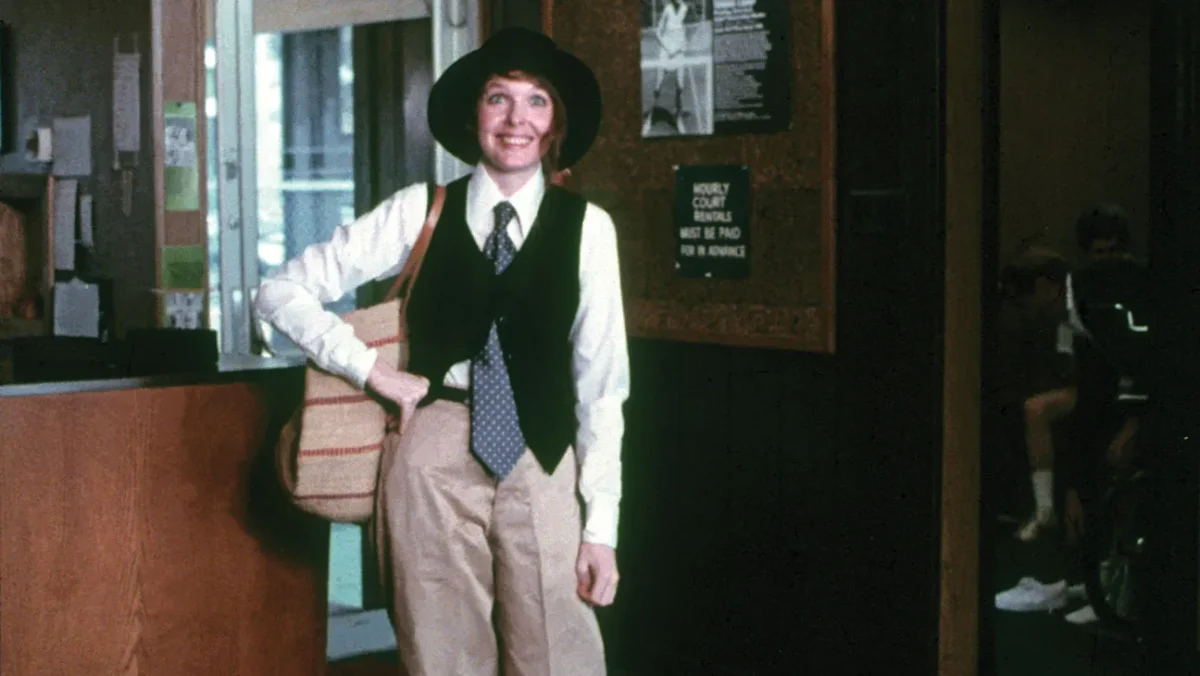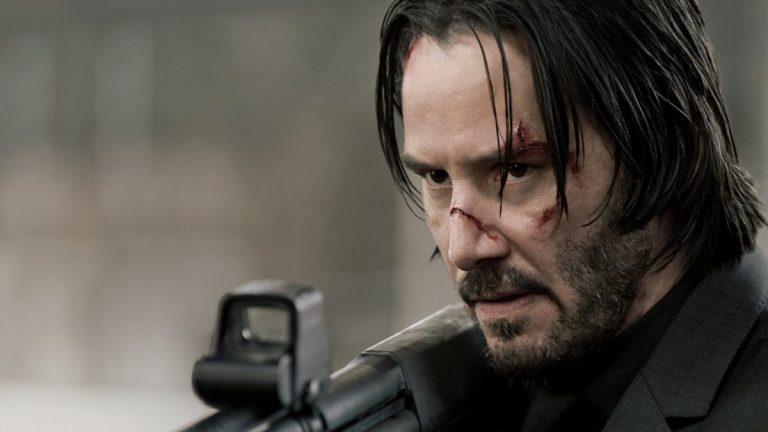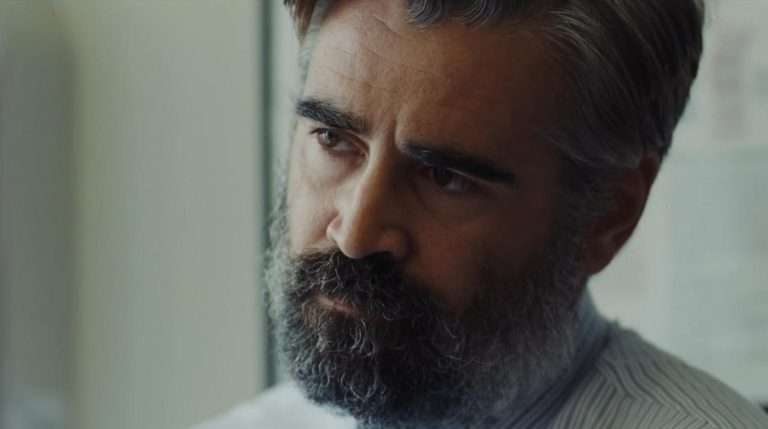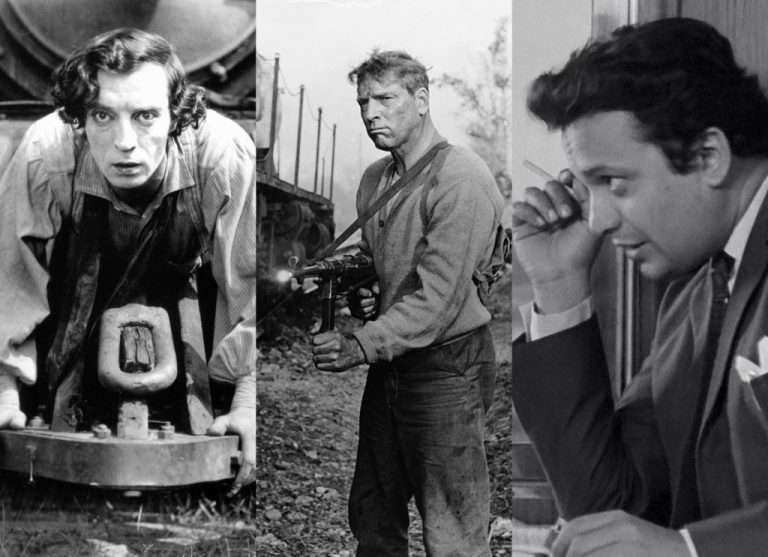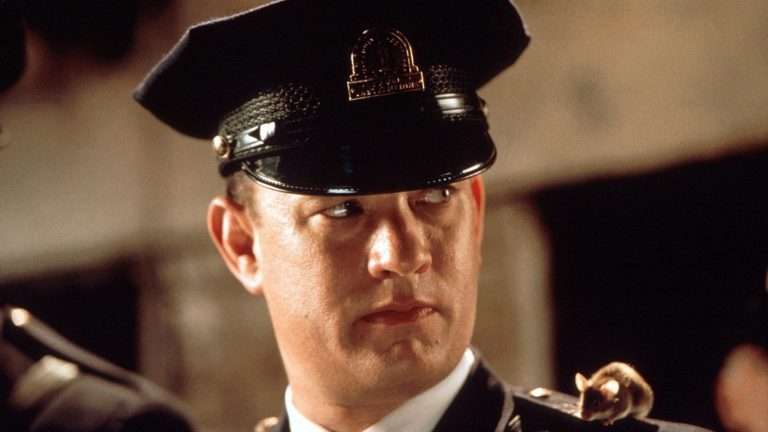Diane Keaton was an irreplaceable icon of cinema who has left behind a staggering body of work. Keaton is remembered as the rare star who was entirely distinctive and could make any role her own. While her work included both riveting dramas and accessible comedies, Keaton never gave a performance that felt insincere.
Although she had a consistency within her career, never dipping out of the spotlight, Keaton still had a chameleonic ability to transform herself for a given role, and showed an incredible amount of bravery in tackling the types of “difficult” parts that female stars would often be told to avoid. Diane Keaton also had a sense of wholesome authenticity that made her performance feel grounded; she represented a slice of reality, which made it easy to relate to her work.
Narrowing down Keaton’s finest work is no easy feat, for beyond her towering classics, she’s graced the screen in a wealth of overlooked treasures and underappreciated gems. News of her death was particularly shocking because she had continued to work and still showed interest in stepping outside of her comfort zone to try something new.
She was also an actress who was not defined by the brevity of her role, or even the overall quality of a film. Keaton could be a scene-stealer with only minimal screentime, and could be the best part of a film that was more mixed quality. The fact that there is no definitive understanding of what a “Diane Keaton film” is speaks to the exciting fluctuations throughout her storied career. Here are the top ten best Diane Keaton films, ranked.
10. Crimes of the Heart (1986)
“Crimes of the Heart” was one of the many “southern melodrama” films that became popular in the 1980s, but its roots were far more literate and blacky satirical than some of the more inherently crowd-pleasing entries within the subgenre. Based on the Pulitzer Prize-winning play of the same name, “Crimes of the Heart” starred Keaton, Jessica Lange, and Sissy Spacek as three sisters who reunite years after their mother’s suicide.
The supposed “crimes” that the title refers to are all indiscretions that these characters made out of desperation, heartbreak, or fury in the midst of their romantic relationships. Nonetheless, the film is almost entirely told from a female perspective. The few male characters that have significant roles exist to fill voids within the complex relationships between these sisters.
Keaton’s role is the film’s most undersung, as her character Lenny is the most grounded, sensible of the trio. While Spacek’s Babe has survived a toxic relationship and Lange’s Meg is the most instinctual and egocentric, Lenny is stuck being labeled as the boring, frumpy one who has to fill the gap left by their mother’s death.
Diane Keaton tackles this complex role with dexterity, as in many ways, Lenny has been forced to pretend to be “grown up” for her entire life, despite having stayed in their hometown and retained her wistful heart. The rare moments in which Lenny’s frustration is unleashed hit raw emotional nerves thanks to the heart-wrenching passion Keaton brings to the role. It’s a showcase for three of the greatest contemporary actresses, whose onscreen familiarity feels almost tangible.
9. Interiors (1978)
Diane Keaton had a longstanding relationship with Woody Allen and was certainly considered to be his most dutiful partner and muse after the success of “Annie Hall,” which earned them both Academy Awards. However, the next collaboration that Allen and Keaton made after their Best Picture winner couldn’t have been any more different than the charming romanticism of “Annie Hall.”
“Interiors” starred Keaton as the distraught author Renata, who reunites with her sisters Joey (Mary Beth Hurt) and Flyn (Kristin Griffith) after their parents, Eve (Geraldine Page) and Arthur (E.G. Marshall), announce they are divorcing after decades of marriage. It was the first of Allen’s films that he did not also act in, and the first that was completely somber in tone. Any of the snarky “Allen-isms” are removed from a powerful, emotionally devastating examination of fractured familial relationships.
“Interiors” was able to tackle themes of depression and insecurity long before mental health became a more mainstream topic of conversation, and Keaton easily makes the transition into playing a more serious character. In watching her studied performance as a devastated writer, there are no remnants of the charm she accessed in “Annie Hall.”
Although the film is filled with great performances, Keaton is a standout because of the multi-generational quality to her character; Renata feels as if she is now tasked with protecting her siblings, but also feels the red-hot pain of her parents’ split. It’s an underrated entry in Allen’s canon that certainly wouldn’t have held up as well if it weren’t for Keaton’s fearless performance.
Read: Parallel Cinema Is Having a Moodboard Moment
8. Father of the Bride (1991)
Outside of Allen, Keaton’s most consistent creative partnership was with writer/director Nancy Meyers, who wrote the screenplay for the remake of “Father of the Bride” that her husband at the time, Charles Shyer, directed. Although it was a far broader comedy than Keaton’s earlier work and could’ve easily been an unambitious crowdpleaser, “Father of the Bride” found a sweet, soulful way of tackling the insecurities that come with parents who watch their children enter a second stage in life.
Hollywood has often been harsh to actresses who play maternal roles, as the system frequently favors younger stars who can convey youth. However, Keaton entered an exciting new chapter within her filmography by showing a dynamic portrayal of maternal generosity, which also proved just how funny she could be in a straight comedy.
“Father of the Bride” may be anxiety-inducing for those who have ever had to plan or attend a wedding, but it’s also an incredibly loving portrayal of two parents who aren’t sure what role they now need to occupy. Not only did Diane Keaton prove she could add an emotional hook to such an accessible film, but she also provided excellent chemistry with the great Steve Martin, who gave one of his best and most sincere performances ever. It’s the rare case in which the remake became so popular and successful that it entirely eclipsed the legacy of the original, as Shyer’s version of “Father of the Bride” has surpassed the 1950 original to be regarded as the “definitive” version of the story.
7. Love and Death (1975)
Allen’s consistency as a filmmaker would later result in some expectancy. He relied on recurring archetypes and tropes that were repeated as he adamantly made one new film per year for several decades. Although the broader success of his work in the aftermath of “Annie Hall” certainly resulted in some interesting collaborations, it also meant that some of the dangerous, edgy humor of his earlier work began to fade away.
Allen was never funnier or more incisive than he was with “Love and Death,” a scathing satire of Russian history that examined the political, philosophical, and ethical debates that were brought upon by the Napoleonic era. Allen gives a strong performance as the distraught Boris, but Keaton is by far the film’s scene-stealer as his eccentric cousin Sonja, who later becomes a key figure within an attempted rebel movement.
As the title would suggest, “Love and Death” makes fun of the convoluted, complex nature in which both romantic entanglements and violent political resistance factions emerged in Russian literature. Boris’s love for Sonja may seem complex, but their relationship is thwarted by various assassination attempts, feigned marriages, unusual social practices, and intimate struggles.
Diane Keaton flawlessly rattles off the complex dialogue, in which she is often asked to delve deep into age-old philosophical quandaries, whilst maintaining a conversational tone. “Love and Death” may have faded somewhat from the spotlight, but it deserves to be remembered as one of Keaton’s most vibrant performances and a masterclass in political satire.
6. Something’s Gotta Give (2003)
The pinnacle of Keaton’s collaborations with Meyers was “Something’s Gotta Give,” a radical culmination of the themes that they had touched on throughout their work together. “Something’s Gotta Give” might be a fairly straightforward version of an “opposites attract” style of romantic comedy, but it’s filtered through the risky decision to explore the musings of older characters.
Hollywood’s obsession with youth has masked the notion that love can emerge at any age, and that people who have already had children and grandchildren are still capable of entering a new chapter in their lives. In order to underline this point, Meyers cast two of the finest actors of all time in the leading roles. Keaton is effortlessly charming in the role of the venerable playwright Erica Berry, and Jack Nicholson gives one of his funniest performances ever as the chauvinistic record company owner Harry Sanborn.
As with most romantic comedies, the two characters are perfectly suited for one another because of how radically different they are. Nicholson’s broad, unapologetic boisterousness couldn’t be more different from the tightly-wound, self-satisfied personality that Diane Keaton embodies.
“Something’s Gotta Give” is the rare Hollywood romance that doesn’t shy away from genuinely devastating moments of emotional denial, yet still pushes both Keaton and Nicholson to do some of the most hilarious acts of physical comedy within their respective careers. Even though romantic comedies and female-driven films aren’t often treated with the respect that they deserve by awards bodies, Keaton’s performance earned her a much-deserved Academy Award nomination for Best Actress.
Check Out: 10 Best Actors Who Earned an Oscar from Their First Nomination
5. Marvin’s Room (1996)
Despite earning Keaton an Oscar nomination for Best Actress, “Marvin’s Room” is a more obscure title within her filmography. It featured one of the most accessible ensemble casts of any ‘90s melodrama. Keaton stars as Bessie, a middle-aged woman who has been forced to spend her life accommodating her father Marvin (Hume Cronyn), who is bedridden after suffering a stroke. While Bessie has spent over two decades dutifully attending to her father, she is forced to call upon her sister, Lee (Meryl Streep), after learning that she has been diagnosed with leukemia.
“Marvin’s Room” is one of the rare “dysfunctional family dramas” that seems to understand the complexity of human relationships, particularly when it comes to the contrivances brought upon by time. Streep and Diane Keaton are cast as nearly opposite characters, as Lee is fiercely independent, yet emotionally susceptible, whereas Bessie has worn her heart on her sleeve and rarely asks for sympathy.
Exploring how these two siblings revert to their childhood antics is complicated by the presence of Lee’s two sons, Hank (Leonardo DiCaprio) and Charlie (Hal Scardino), both of whom begin to learn the lessons that Bessie gives to them about patience and forgiveness. Although there are other strong ensemble players like Robert De Niro and Dan Hedaya, “Marvin’s Room” is a showcase for two of the best actresses of all time, and results in some truly insightful moments of emotional catharsis. Keaton’s performance may have seemed thankless on paper, but she turned it into one that was essential.
4. Manhattan (1979)
“Manhattan” represents an evolution within Keaton and Allen’s professional collaboration, as it merged the snappy, creative construction of their early work with a truly classical style of old-fashioned beauty. It’s fitting that “Manhattan,” a film that satirizes the haughtiness of New York intellectuals, is directed with the most outstanding visual and production qualities of Allen’s filmography up until that point. It utilizes a George Gershwin score and wondrous black-and-white cinematography that evokes his most classical influences.
Even if Allen has expressed his admiration for such diverse artists as Charlie Chaplin and Ingmar Bergman, “Manhattan” is also a decidedly modern film that examines romantic quibbles with a touch of parochialism. It’s among the most biting and hilarious of Allen’s films, with Diane Keaton at her most charming and ruthless.
Keaton’s character, Mary, is among the most difficult roles of her career. Despite her snobbish attitude and infidelity in prior relationships, Mary is somehow the most honest character in “Manhattan” because she has never settled for something she feels is unworthy of her. Although Allen casts himself as the idiosyncratic comedy writer Isaac, in what is easily one of his most self-referential roles, there’s a vulnerability and self-sabotaging openness that he brings whenever he shares the screen with Keaton.
While it’s often remembered as a highlight of Keaton’s career and one of the most influential romantic comedies of the 1970s, “Manhattan” deserves to be more broadly celebrated as one of the most authentic portrayals of New York cultural elitism ever brought to the big screen.
3. Reds (1981)
Hollywood’s attempts to position itself at the vanguard of political movements are far less admirable than they appear, as an industry driven by profit seldom prioritizes genuine reform. It’s because of Hollywood’s rather stagnant approach to political revolution that Warren Beatty’s “Reds” has stood the test of time as one of the most inventive, important, and entertaining works of historical epic filmmaking to emerge since the Golden Age of Hollywood.
Also Read: Diane Keaton Dead at 79: How She Quietly Changed Hollywood and Lived on Her Own Terms
Over three hours of length fly by in this tale of the journalist John Reed, played by Beatty himself, who chronicled the October Revolution when its impact was only spoken about in hushed terms in the West. With her role as the activist Louise Bryant, Keaton did more than just serve as the “love interest” within a “great man” film. Bryant is the radical, practical suffragist who took note of what socialist practices had taken shape in Russia and saw the value in implementing them in Western society.
Keaton’s performance is passionate, humane, and brave. She conveyed the urgency of Bryant’s quest, whilst also recognizing that she was a fallible person who was capable of changing her mind. “Reds” has the type of nuanced discussions about political philosophy that are still almost unheard of in mainstream cinema, but it also weaves in a fascinating romantic love triangle between Reed, Bryant, and the fringe playwright Eugene O’Neill (Jack Nicholson). Keaton’s performance earned her an Oscar nomination for Best Actress. With all due respect to Katherine Hepburn’s work in “On Golden Pond,” Diane Keaton deserved to win.
2. The Godfather (1972)
There’s little to say about “The Godfather” that hasn’t been said before, as it is rightfully remembered as the film that changed cinematic history forever. Francis Ford Coppola took a popular, if not necessarily profound, work of gangster fiction and turned it into an epic family drama that examined the pitfalls and contradictions within the “American dream,” bringing it to life with energy and momentum.
Although there isn’t a performance in “The Godfather” that is not excellent, Diane Keaton has one of the film’s most nuanced, understated roles as Kay Adama, the first girlfriend of Michael Corleone (Al Pacino), who is left abandoned after he is forced to go into hiding in Italy after executing his father’s enemy.
Kay is the audience’s gateway into “The Godfather.” She is the ultimate outsider, as it is only her genuine affection for Michael that brings her into the duplicitous danger of the Corleones. Keaton’s somber, affecting work makes Michael’s transition into the titular “Godfather” more tragic, as she must bear witness to the man she loves turning into the same prominent gangster that her father was.
Keaton’s final scenes in “The Godfather” are among the most pointed, delicate scenes that Coppola has ever crafted, and perfectly capture the ambiguity that exists between the relationship of Michael and Kay. Although Keaton has the most to do within the first film, her appearance in “The Godfather: Part II” features a devastating reveal to Michael about his potential heir that completely changes the power dynamics of the entire franchise.
1. Annie Hall (1977)
It’s the rare case where an actress’ most famous, most decorated role is also the best, as “Annie Hall” epitomized Keaton’s ability to bring complex, funny, and often “messy” women to the big screen with both humility and empathy. “Annie Hall” is the film that established a formula for romantic comedies that has been aped for generations, and it’s because the film never completely gives either character a sizable advantage over the other.
“Annie Hall” was at the forefront of topical issues, as it questioned the difference between romance and sexuality, thoroughly depicted the paranoia of Jewish identity, and explored the advantages and pitfalls of modernist ideas about self-satisfaction, therapy, and independence. It’s also, simply put, one of the funniest films of its era, and hasn’t lost a touch of its edge in the decades since its release.
Although “Annie Hall” herself is one of the great characters in cinema, Keaton worked overtime to make it a performance that she completely owned. Even if much of the film is told through Alvin’s perspective, Annie’s instructions within the story poke holes in the logical arguments that he has desperately tried to construct.
It’s not surprising that Keaton’s performance became so beloved that she risked being typecast in the aftermath, as it was simply too good a character for her to retire. Diane Keaton deserves all the credit in the world for managing to defy expectations and consistently choose films that accessed different components of her star persona, but “Annie Hall” is justifiably the type of all-time great achievement that best encapsulates her legacy.

